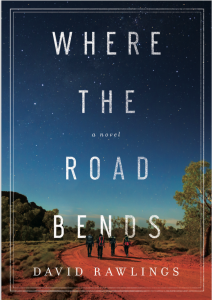by David Rawlings, @DavidJRawlings
We are visual creatures. We always have been – at the start of my academic teaching career back in 2000 the statistic that was constantly bandied around was that 40% of any given group were visual learners. They preferred to learn visually because that’s how they processed information.
Fast-forward to 2020 and that number is likely to be closer to 100%. Why? Visual content is everywhere now – maybe it’s due to a prevalence of social media content and our perceived lack of time to absorb too much of the written word – but we are drawn more to visuals. Images. Video. Memes. Even our written language is slowly being replaced by the hieroglyphics of emojis. Some people are replacing reading with binge watching on Netflix, or keeping up with their favorite series streaming on their phones.
So how does this relate to writers? We might need to think visually more than we do.
By that I don’t mean that we all start writing and drawing graphic novels or we turn our skills to writing screenplays. Rather, maybe we could meet our readers where they are by thinking about how they process the story. This is what I mean – the four ways a writer can think visually:
- Storyboarding. I use this in my fiction writing as well as my corporate writing work. Storyboarding – or treating your work as if it’s the storyboard of a movie script – allows you to see your story visually. It helps me to see key moments in the story and the lead-up to them. I’m able to see the journey of certain characters, which is handy when you’re juggling an ensemble. I find it better than simply having written notes on page after page in Word.
- Characters. Many authors develop characteristic sheets for their characters outlining their backstory, likes, dislikes, favorite foods etc. The list is endless. But some go further to produce images of what they look like, and it’s these stories I find myself drawn to when it comes to character empathy. I can picture them because the author is thinking visually. (I mean more than heavy description the first time we meet them. Their visual quirks make regular appearances as they progress through the story. And the images make great social media content for you to engage with your readers too.)
- Scenes. Some authors go as far as to visualize scenes. If you do this, I think your writing is better for it. I use this with key scenes – like in my recently-released novel Where the Road Bends. It’s based in the Australian outback, so I was always referring to my bank of visuals (photos and videos) that showed me where the character was. I had photos for where characters were trapped, where they felt alone, and where they interacted with the story. That gave me another insight into their story – I was writing more than what they felt, I was writing what they saw and sensed.
I had this photograph in mind when I had a key scene for a character trying to outrun a storm in the middle of nowhere.
This is one of my own photos, taken during a research trip, but it also formed the visual bedrock of writing that scene. I wasn’t just describing the character’s internal journey, I was focusing on the changes to the environment around them in visual terms.
These are the rocks of central Australia, and they were the backdrop to a journey the characters took as they hiked into a ravine.
This helped me focus on the color and shape of the terrain, to help me place my reader inside the location.
- Key elements of the scene. I’ve enjoyed some success by reflecting the key elements of a scene in terms of what the character saw as much as what they said. Dialogue is important, but setting the scene visually can really help draw your readers in. We’re encouraged with our writing to show our readers the scene through the eyes of our characters, not just tell the readers what’s happening. Thinking visually helps.
Readers are very visual, and will continue to lean that way. This is something I keep bringing myself back to when I’m writing and editing. If you’re already visual, that’s great! Maybe think about how you could introduce another element to your process. If you’re not, maybe it’s something to consider.
Four friends reconnect fifteen years after graduation on a promised trip to the Australian outback. Time has changed them. At graduation life was all about unfulfilled potential. Fifteen years down the track, it feels a lot like regret.
As they get lost in outback Australia they find more than harsh beauty of an unspoilt land… … they discover how the road of life delivered them to where they are now.
And getting back requires them to determine where they’ll go from here.

Based in South Australia, David Rawlings is an award-winning author, and a sports-mad father-of-three with his own copywriting business who reads everything within an arm’s reach. He writes that take you deeper into life, posing questions of readers to explore their own faith and how they approach life.
Where the Road Bends – a novel based in outback Australia – is out now! Why not take a virtual vacation during your time at home?
David’s debut novel – The Baggage Handler – won the 2019 Christy Award for First Novel. His second novel – The Camera Never Lies – focuses on honesty in relationships and is now available.
He is currently signed with Thomas Nelson and represented by The Steve Laube Agency.


